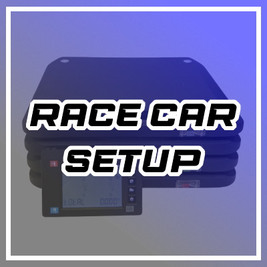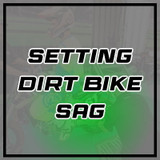A Step-by-Step Guide to Setting Up Your Race Car
A Step-by-Step Guide to Setting Up Your Race Car
Scaling your dirt late model, dirt modified, or dirt street stock is an important step in the racing setup process. It helps ensure that your car has the right weight balance and ride height, allowing you to perform at your best. Knowing how to properly set up your race car can give you an edge over the competition. But what exactly does it mean to scale a race car and how do you do it? Let's take a look.
Preparing to Scale the Race Car
Before you begin scaling your race car, there are some preparations that need to be made first. Start by marking four spots on the garage floor for the scale pads. Make sure all components of the car (tires, brakes, shocks/springs) are ready for scaling and bounce the chassis on each side a few times to work out any binds or jumps from the shocks/springs.
Executing the Scaling Process
Once you’ve done all of this preparation, it’s time to start actually scaling your race car. Place each scale pad in its designated spot and make sure they’re level with each other before taking readings from them. Aim for achieving desired weight balance per manufacturer’s/track specs—this will depend on track size, surface type, weather conditions, and much more. Once desired weight balance is achieved, adjust ride heights if ballast has been moved around during scale process—you may need to use blocks of wood or similar items underneath tires if necessary. To add cross weight (or wedge), turn all corners clockwise then counterclockwise until desired amount is achieved.
Recording Final Settings and Concluding the Process After everything is set up correctly, document all final settings so that they can be reused in future events as needed without having to repeat this entire process again. This includes not only documenting weights but also tire pressures (including internal tire pressure). Finally, it’s important not to forget about safety when making these adjustments—make sure both yourself and others around you are wearing proper safety equipment throughout this whole process!
Scaling your race car is one of those tasks that requires patience and attention to detail in order for it be done correctly. But once you understand what needs to be done and why it needs to be done, setting up a race car becomes much easier—and more importantly—much safer! By following this guide closely every time you need to set up a racetrack car, you can rest assured knowing that your vehicle will have optimal performance no matter what track conditions come its way!
Recent Posts
-
Upgrade Your Motorcycle's Comfort and Style with Saddlemen Step-Up Seats
Upgrade Your Motorcycle's Comfort and Style with Saddlemen Step-Up SeatsRiding your motorcycle shoul …Jan 23rd 2024 -
How to Set Dirt Bike Sag - The Ultimate Guide
How to Set Dirt Bike Sag - The Ultimate GuideDirt bikes have unique suspension systems that allow th …Jan 22nd 2024 -
The Ultimate Guide to Must-Have Accessories for Your Harley Street Glide
The Ultimate Guide to Must-Have Accessories for Your Harley Street GlideHarley-Davidson's Street Gli …Jan 18th 2024




